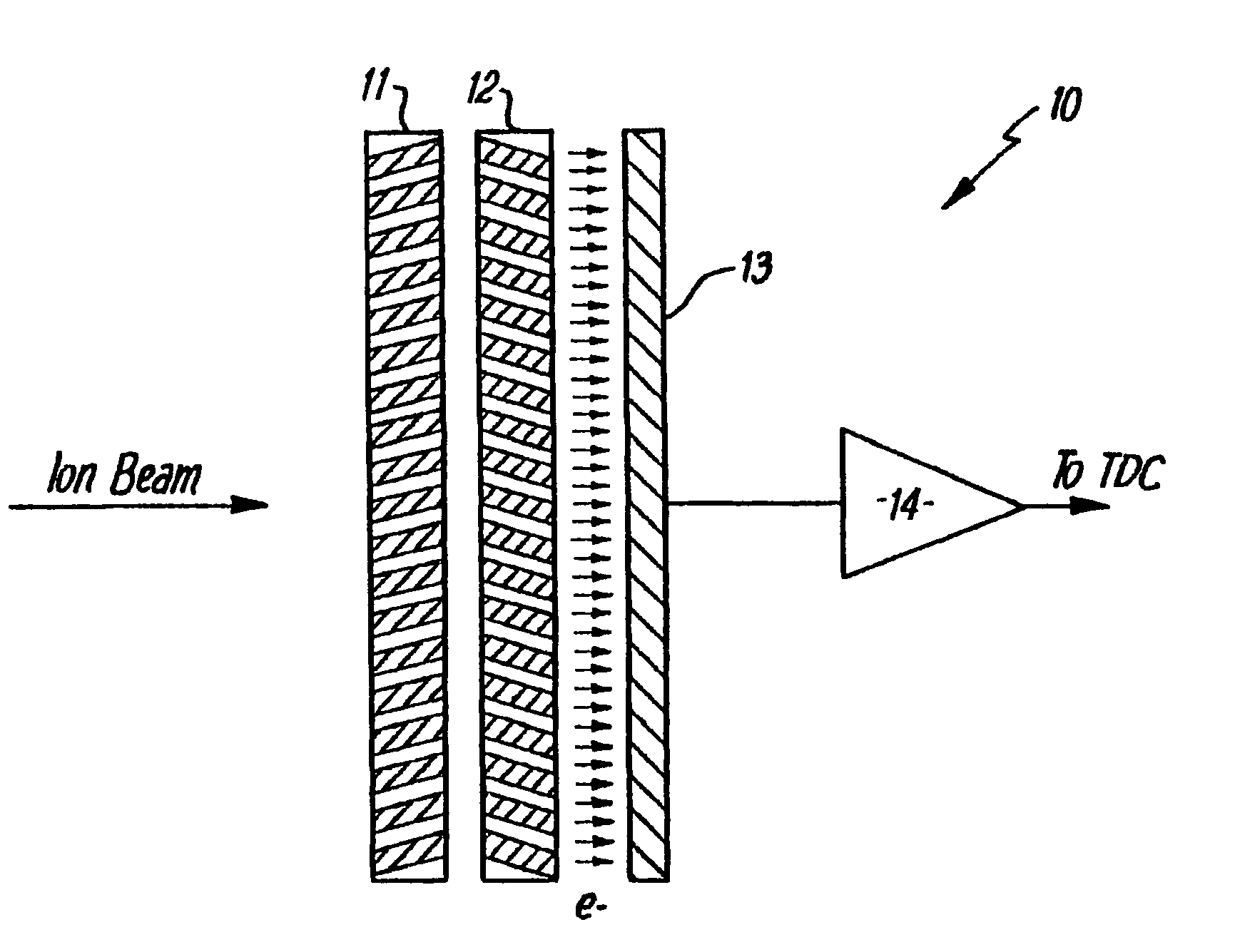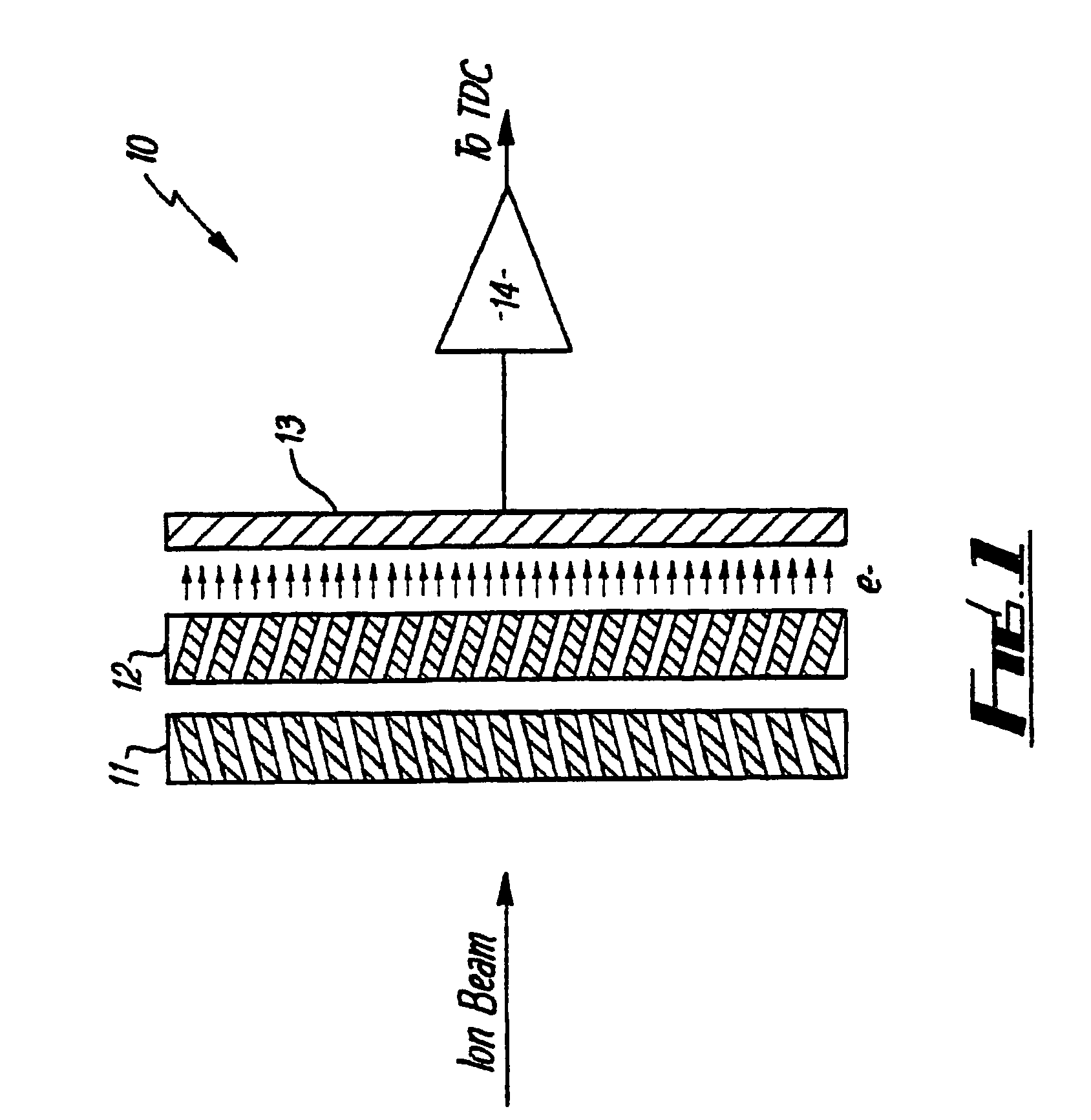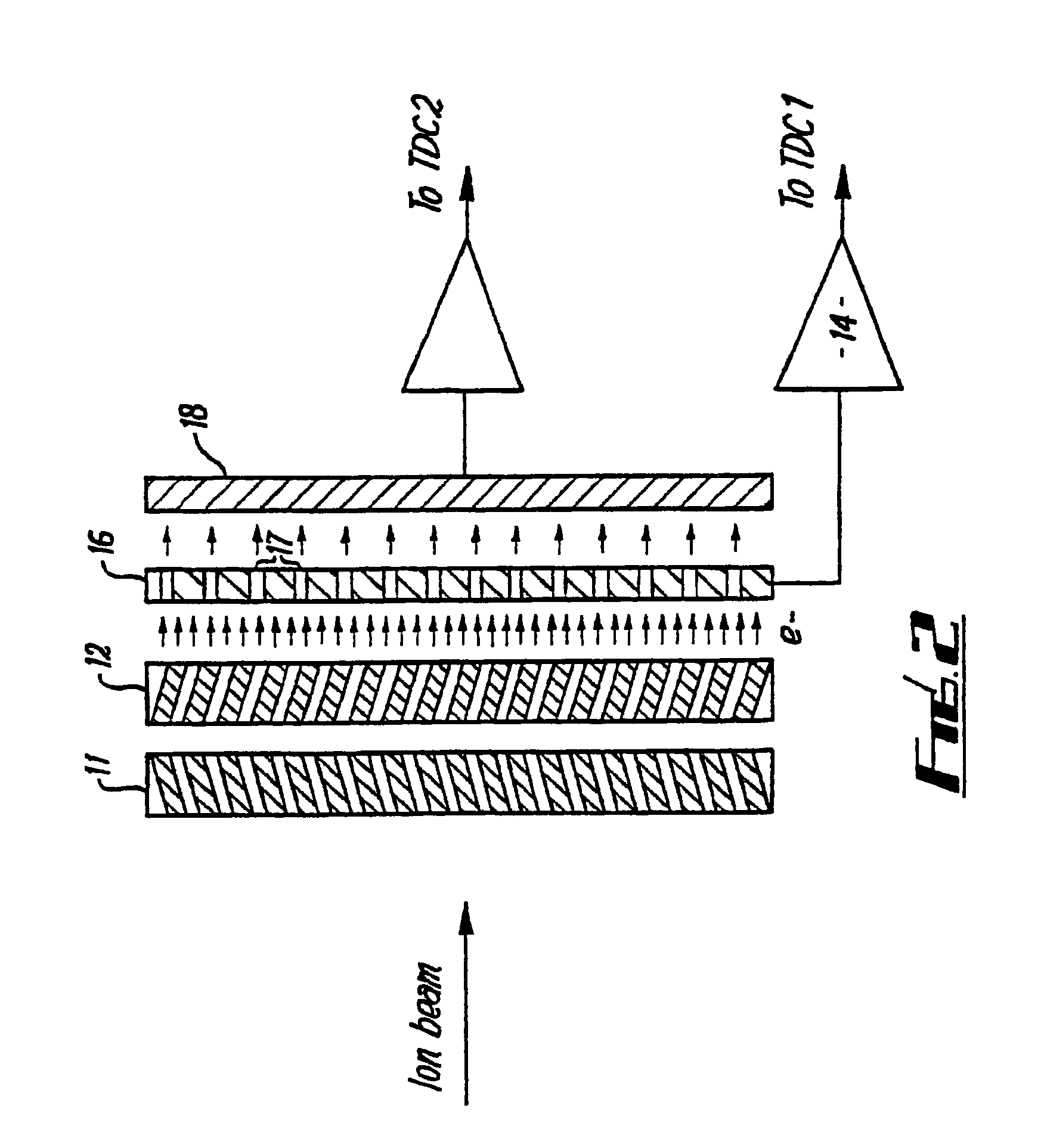High dynamic range mass spectrometer
a mass spectrometer and high dynamic range technology, applied in the direction of optical radiation measurement, instruments, separation processes, etc., can solve the problem of not being able to distinguish between single ions being detected, tdc cannot distinguish between different magnitudes, and it is more difficult to obtain accurate quantitative results using a transient recorder
- Summary
- Abstract
- Description
- Claims
- Application Information
AI Technical Summary
Benefits of technology
Problems solved by technology
Method used
Image
Examples
Embodiment Construction
[0025]Referring now to the drawings, there is shown in FIG. 1 a schematic representation of one standard form of prior art mass spectrometer detector. The spectrometer 10 comprises an ion source (not shown) which produces an ion beam from a substance to be analyzed. The ion beam is directed by conventional means onto a pair of microchannel plates 11,12 (hereinafter referred to as a chevron pair) which generates secondary electrons due to the collision of the ions in the ion beam with the material of the plates 11,12 in the microchannels. Secondary electrons generated are detected by a single plate anode 13, the detected signal is amplified in an amplifier 14 and is passed to a time to digital converter (TDC) (not shown) which detects detected signals over a predetermined threshold and increments a counter to count these above threshold signals.
[0026]This form of mass spectrometer suffers from the problem that if an above threshold signal is detected by the TDC, the counter will be i...
PUM
| Property | Measurement | Unit |
|---|---|---|
| mass spectrometer | aaaaa | aaaaa |
| width | aaaaa | aaaaa |
| mass | aaaaa | aaaaa |
Abstract
Description
Claims
Application Information
 Login to View More
Login to View More - R&D
- Intellectual Property
- Life Sciences
- Materials
- Tech Scout
- Unparalleled Data Quality
- Higher Quality Content
- 60% Fewer Hallucinations
Browse by: Latest US Patents, China's latest patents, Technical Efficacy Thesaurus, Application Domain, Technology Topic, Popular Technical Reports.
© 2025 PatSnap. All rights reserved.Legal|Privacy policy|Modern Slavery Act Transparency Statement|Sitemap|About US| Contact US: help@patsnap.com



